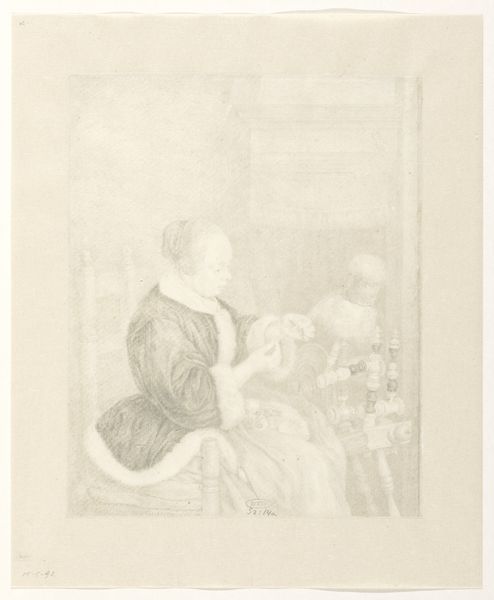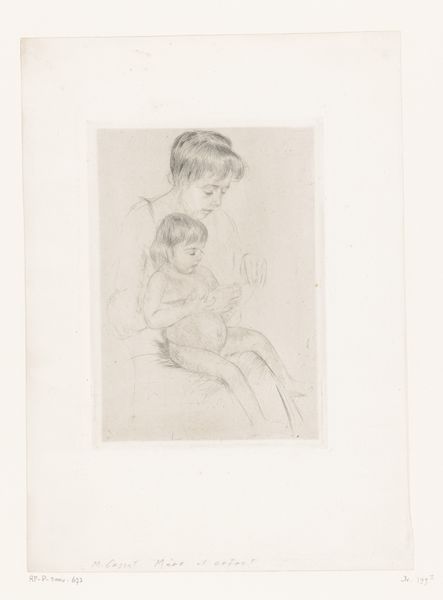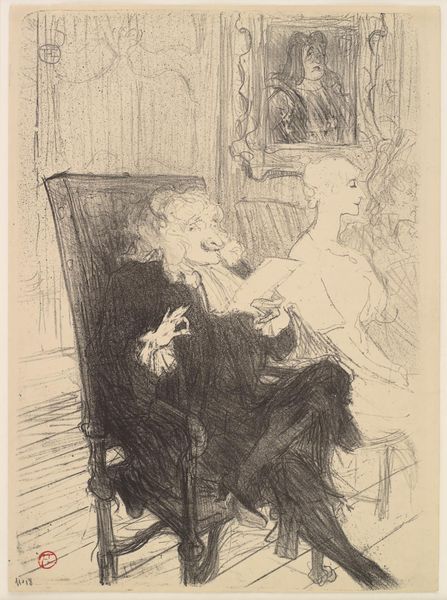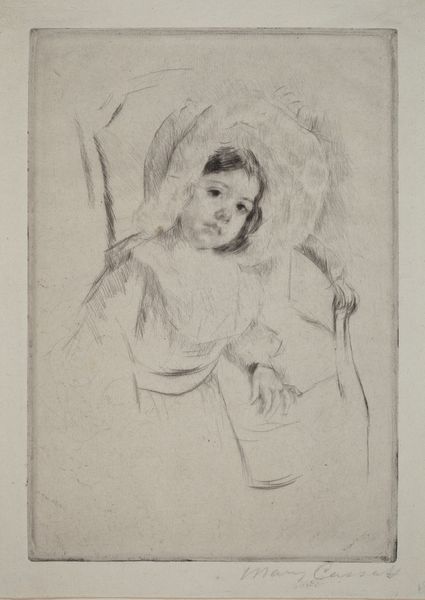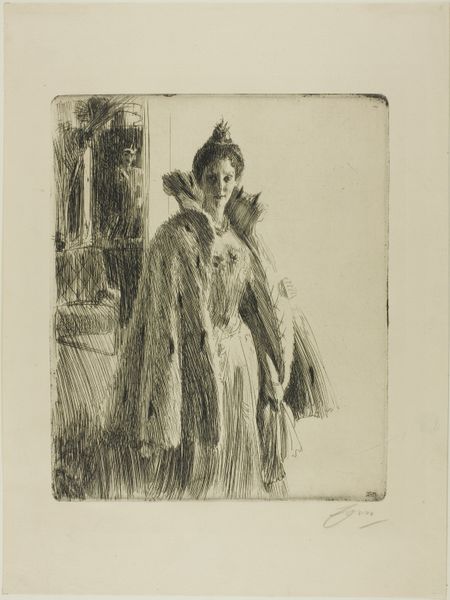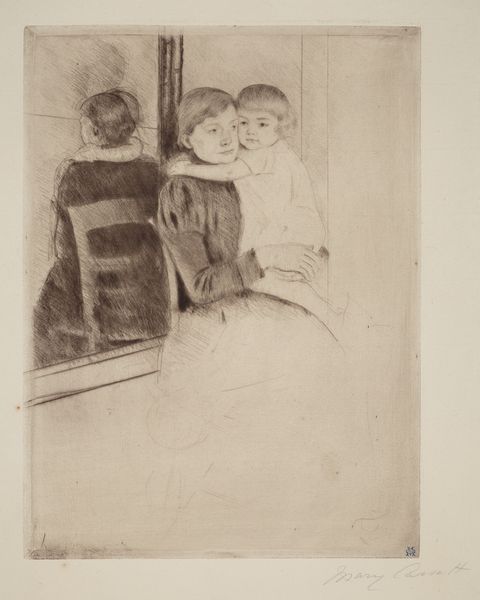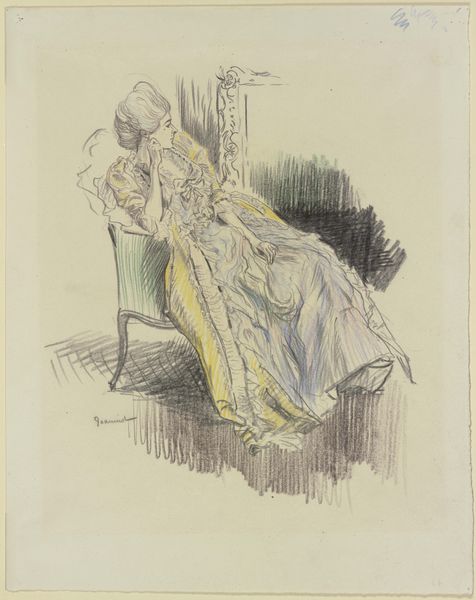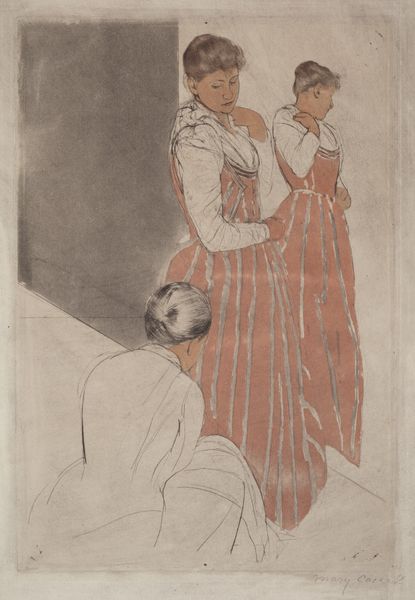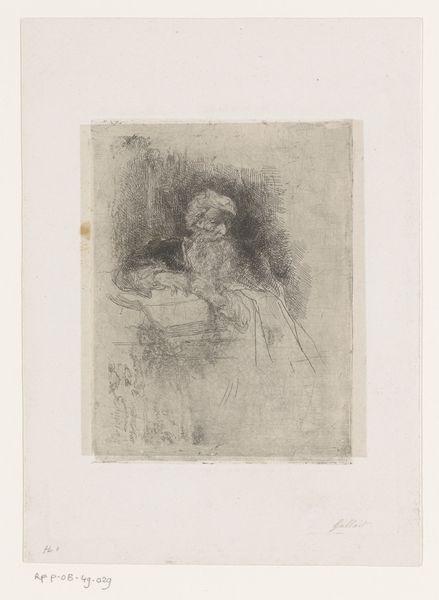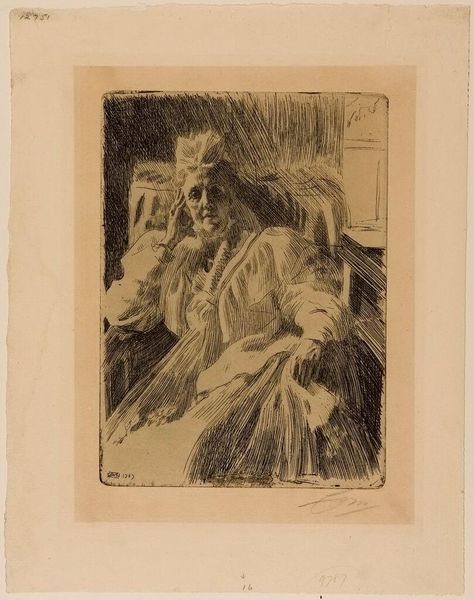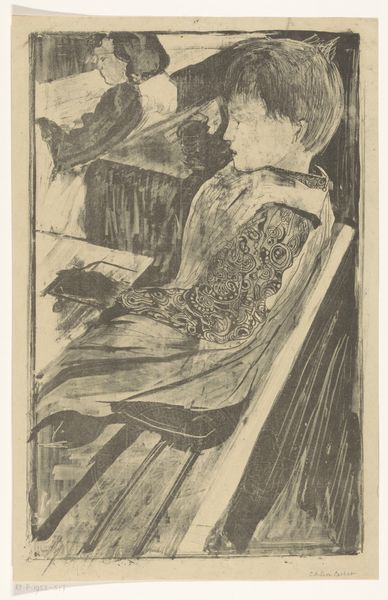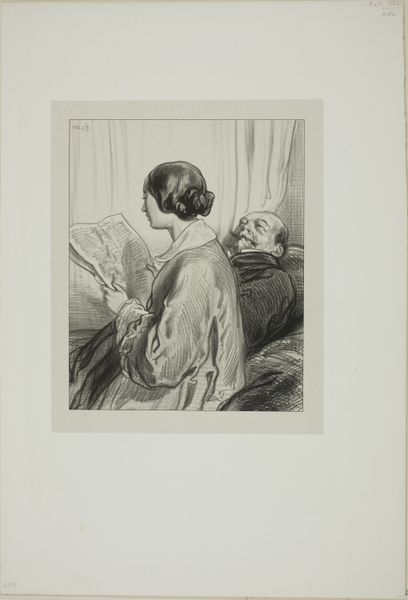
drawing, coloured-pencil
portrait
drawing
coloured-pencil
intimism
coloured pencil
genre-painting
watercolor
Dimensions: height 216 mm, width 160 mm
Copyright: Rijks Museum: Open Domain
Editor: Here we have "Le Miroir," or "The Mirror," by Henri Emile Lefort, created sometime between 1862 and 1880 using colored pencils. It's quite a tender scene, a mother and children looking into a mirror. What strikes me most is the domestic intimacy it conveys. What do you see in this piece? Curator: That intimacy is key. Genre paintings like this gained popularity in the 19th century. This popularity happened alongside the rise of the bourgeoisie, so artists began depicting everyday scenes within the household as a celebration of family life and domesticity. How do you think Lefort positions women within that cultural context? Editor: I suppose the mother embodies those ideals? She is caring, attending to her children's reflection… almost like a symbol of the home itself? Curator: Precisely. The mirror, then, acts as a symbol as well. Think about what the mirror reflects: societal expectations, idealized images of motherhood, or perhaps something more complex like the woman's own self-perception filtered through social constructs. And who controlled the narrative around those societal expectations? Editor: Certainly not the women themselves… but powerful cultural institutions? That's very interesting! So the piece isn't just a sweet domestic scene, but part of a bigger conversation. Curator: Exactly. Consider where it was exhibited, who saw it, what did the institutions that showcased it *want* viewers to think? Thinking about this broader socio-political lens, the image acquires different dimensions. Editor: This piece seems to offer so much more to think about when we move beyond a surface level view. Curator: Absolutely. By understanding the artwork's placement within a larger framework, the meaning we find expands.
Comments
No comments
Be the first to comment and join the conversation on the ultimate creative platform.
